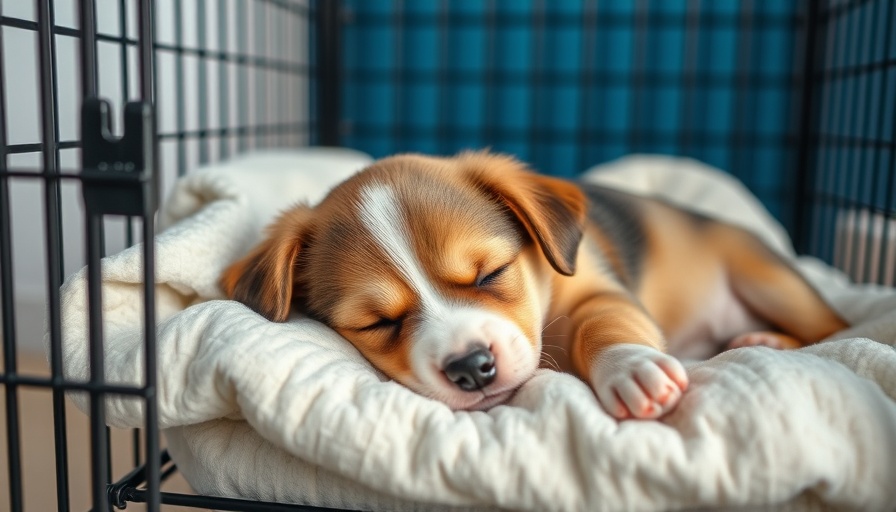
Understanding Puppy Independence
The adorable moment you bring a new puppy home is filled with excitement, but the reality of leaving your furry friend alone can provoke anxiety. It's crucial for both you and your puppy to learn how to handle separation. Puppies, like young children, need to develop a sense of independence, and the best way to facilitate this is by gradually introducing them to being alone for short periods.
Setting Boundaries: How Long is Too Long?
According to various experts, there’s no universal answer when it comes to how long a puppy can be left alone, but guidelines suggest that a puppy should never be left for longer than their age in months—the ideal being one hour per month of age. For example, a 3-month-old puppy can be left alone safely for about three hours.
Puppy breeds and their energy levels are also influential factors. A high-energy puppy, like a Border Collie, will likely feel more restless and anxious than a laid-back Bulldog. Establishing a routine while being cognizant of your puppy's unique needs is essential.
Creating a Safe Space
Before leaving your puppy alone, prepare a designated space that is safe and comfortable. This might include a crate or a large expen. It’s recommended to make this area inviting by adding toys, a cozy bed, and including water and food access. Puppy pads can help manage any accidents as your pup adjusts. Avoid leaving your puppy in a crate for extended periods, as they need to move around and stretch their legs.
Ease Into It: Gradual Separation
Start by leaving your puppy alone for short intervals. For instance, practice leaving them in their designated area while you step outside for ten minutes. Gradually increase this time, ensuring to return calmly; this helps your puppy understand that you will always come back. The goal is to build positive associations with your absence. Experts also suggest leaving behind a piece of clothing with your scent for added comfort, as familiar smells can have a soothing effect.
Demystifying Separation Anxiety
Separation anxiety is a common concern for new dog owners. Symptoms can range from excessive barking to destructive behaviors. Recognizing your puppy's anxiety signals is key. If your puppy displays distress symptoms when separated, consider consulting a professional trainer to help navigate the challenges of separation anxiety.
Engaging Activities While You’re Away
Ensure your puppy has stimulating activities to engage with when you're not home. Invest in interactive toys that can keep their mind busy—those designed to dispense treats can be particularly effective. Enriching your pup's environment with various toys and puzzle games is a great way to mentally stimulate them and keep boredom at bay.
Physical Exercise: A Vital Component
A tired puppy is often a well-behaved one. Prioritize exercise for your puppy through morning walks or play sessions. Engaging your puppy in physical activity before an extended absence can significantly reduce anxiety and pent-up energy, leading to a calmer experience when you’re away.
Alternatives to Leaving Your Puppy Alone
If you will be out for an extended time, consider alternatives to leaving your puppy completely alone. Options include hiring a dog walker, asking a friend or family member to check in, or even enrolling your puppy in doggy daycare. Doggy daycare not only offers supervision but also provides much-needed socialization and exercise opportunities for your puppy.
Utilizing Technology for Peace of Mind
To ease your worries while you’re away, consider investing in a pet camera. Many affordable options allow you to monitor your puppy's behavior in real-time, giving you peace of mind and allowing you to interact with them from a distance. Knowing how your puppy is doing can relieve the anxiety of separation for both you and your furry friend.
Returning Home
When you come home, resist the urge to make a big fuss—this could create undue excitement for your puppy. Instead, wait until they have calmed down and then reward them with treats and affection to reinforce positive behavior. A consistent routine will help further establish a sense of security for your puppy.
Conclusion: Thrive Together
As you both adjust to separation, remember that your puppy is learning and growing, just as you are learning how to be a proactive and caring pet owner. Use the opportunities and challenges of leaving your puppy alone to strengthen your bond and build a healthy, trust-based relationship.
 Add Row
Add Row  Add
Add 


Write A Comment